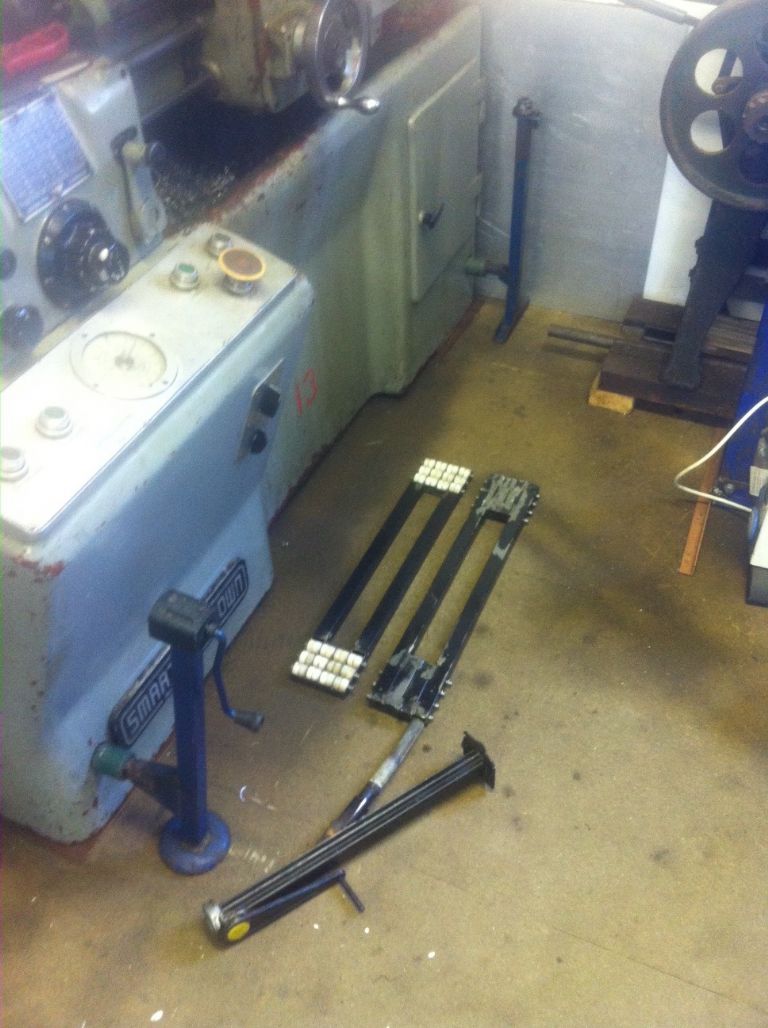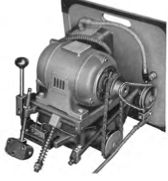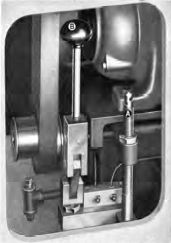Agree with Lathejack about the rock solidity, durability and high quality of the S&B Model A. If looking to buy one definitely go for a Mk 2 unless the price is very right on a Mk 1. Although the difference is, as Lathes.co.uk says, pretty much just a matter of tidying up details the end result is a far nicer machine to use.
Objectively the major disadvantages of the S&B A are the screwfitting spindle nose and small spindle bore. I'd also find it an irritating faff to change the belt over for high / low range speed shifting. Although, to be fair most jobs will be either high range or low range ones so in practice the belt won't need shifting as often as might be expected. Before buying one do verify that the belt is in good order as a replacement needs to be joined in situ. Not massively difficult but its one of those jobs that most folk need to do a couple or three times before you get the technique nailed down. Irritating on a job you will only do once.
VFD drive would get round the belt swopping business but the motor will almost certainly be hard wired 440 volts (220-380 was an option but rare in the UK) so its either get inside to alter the connections or fit a new motor. The S&B DNA demands heavy motor mount assemblies with very little access room. Pulling the motor for mods ready for VFD fitting will be a serious work out.
If properly lubricated and in good order the spindle bearings pretty much "last for ever". Which is good as you seriously do not want to faff about getting adjustment right or (quadruple eek!) pull the spindle.
The standard threads list is a little limited by some standards but the 27 provided should handle most things. It should have the excellent ball bearing intermediate gear assembly in the end gear train. Conversion between imperial and metric thread is generally easier than with many lathes beacuse the 127 conversion gear goes on the gearbox input shaft so a compound gear is not required for almost all metric pitches below 2 mm. Coarser than 2 mm needs a compound gear. Pretty sure fitting a compound gear involves removing the banjo to change the stud assembly to take plain bore gears, as per the 1024 in standard form, which is a PIA. I believe the gear specifications are the same as my 1024 so if you need more most can be got off the shelf from folk like HPC. Considerably cheaper than the usual hunt for factory specials.
Its heavy. Around 1,300 lb, just over half a ton, bare.
Bottom line is its a seriously good machine but I have to say that, were I in that market, I'd keep looking for a decent 1024 VSL which isn't much bigger overall but has usefully larger capacity. But I'm biased 'cos thats what I did with no regrets once we'd sweated, strained and cursed it into place. Twice the weight of the A!
I have a PDF version of the manual. PM me if you'd like to see it. But frankly there is very little of great import inside.
Clive
Edited By Clive Foster on 17/05/2019 13:31:20
Edited By Clive Foster on 17/05/2019 13:41:58
old mart.







